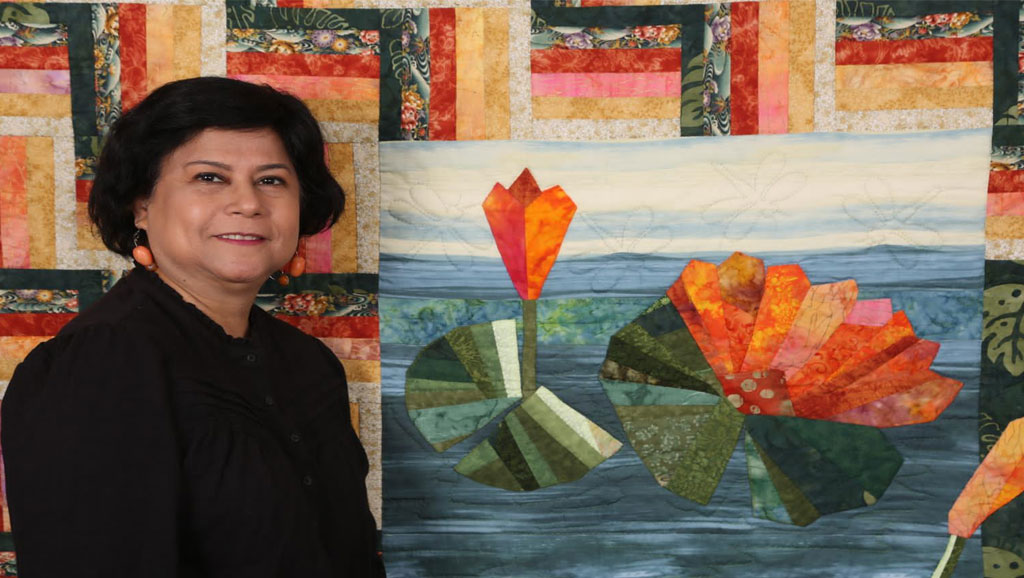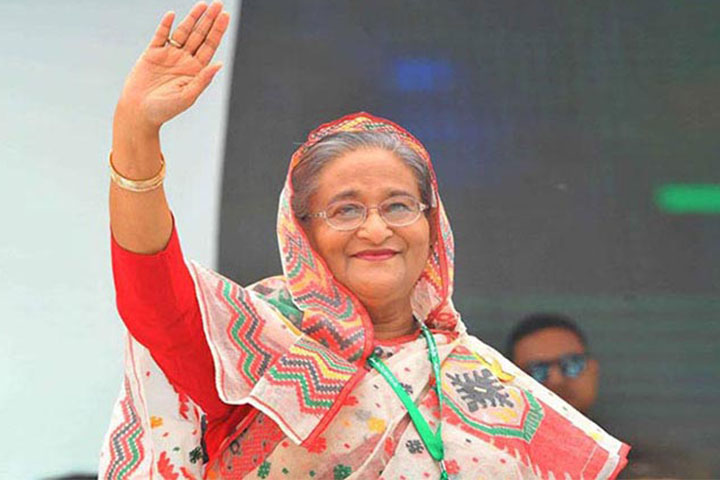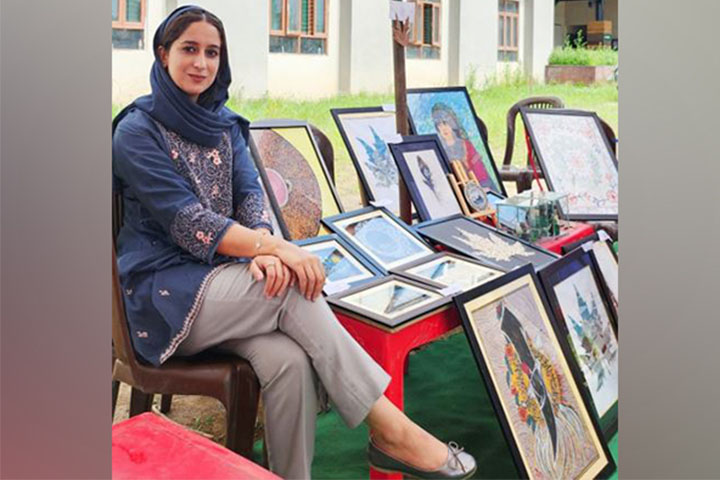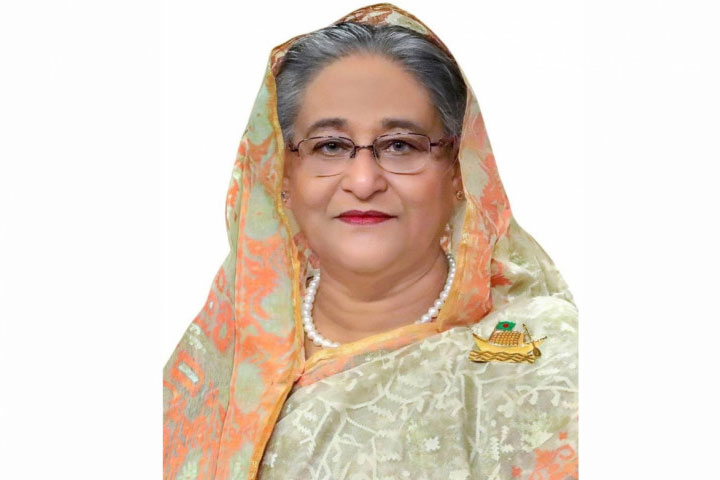Insha's journey to becoming the change she wished to see
The idea of leaving a prestigious career overseas to pursue a vague dream may sound daunting to most, but for Insha Rasool, the 33-year-old resident of the Budgam region of Kashmir, its a life decision she has never regretted.
The PhD scholar was pursuing her education in molecular cell signaling from the Pohang University of Science and Technology, when she was awed by beautiful strawberry farms while on a school field trip with her children in South Korea.
"Why can't our Kashmir have such mesmerizing farms as they have here?" Rasool's rhetoric question to her husband was met with a surprisingly warm response of, "Well, why don't you start one?"
Everything since that statement of support, is history. Rasool and her husband returned to their homeland with nothing but a passion for farming. With the added desire to make her farming practice healthy and ethical, Rasool nurtured her brainchild HomeGreens, an organic farm brand, from the ground up over the course of 4 years.
As a scientist, it took Rasool 3.5 acres of ancestral land, months of research and experimentation, more failures than success and endless hard work to finally see her dream of organic farming come to fruition.
Up until 2019, before the bifurcation and subsequent transformation of the state of Jammu and Kashmir into a Union Territory, the region was left largely untouched by mass-scale industrialization. In these circumstances, agriculture played the predominant role in providing livelihood to approximately 70 per cent of the population in the territory, whether directly or indirectly, and till date contributes a majority share of 65 per cent to the union territory's revenue. Notably, despite agricultural land in the region shrinking in size, the contribution of farming and agriculture to the gross state domestic product (GSDP) has remained stable.
Since 2019, Rasool's home-grown brand has flourished under her dedicated guidance and determination; Rasool's story is just one of many which exhibits the spirit of resilience and passion that exists in the Indian state of Kashmir. The government's commitment to foster the lucrative zeal of its people, and aid in their primary sources of income have served a crucial role to take these individual initiatives to the next level.
The Lieutenant Governor of Jammu and Kashmir, Manoj Sinha, in his address at the first Zonal Convention on Natural Farming at Sher-e-Kashmir University of Agricultural Sciences and Technology stated that the UT is "giving major impetus to natural and organic farming", stressing on these ethical farming practices as a strong tool for battling the issues of climate change and soil degradation.
Previously, in the month of February, the summer capital of Srinagar saw the inauguration of a workshop for "Organic Farming and its Marketing", organized by the Directorate of Agriculture Kashmir in collaboration with INVEST INDIA, National Investment Promotion and Facilitation Agency. In the past decade, farmers in the UT have made large advances in adopting organic practices, with assistance from the agricultural department of the Union Territory.
Agriculture being the major source of income for the population of the UT, there has been growing concern regarding the depleting soil health and worsening Environmental Sustainability Index of the region; such concerns have been met with appropriate countermeasures by the Department of Agriculture and Farmers' Welfare with the gradual yet steady introduction and switch-over to organic farming.
Young entrepreneurs like Rasool aren't limited to their own development, but are also invested in the development of the farmer community as a whole too. The female agripreneur tends to collaborate with other local farmers at prices higher than the going market-rate.
In recent times, local farmers in the region enjoy immense support and encouragement from the authorities to go natural and to capitalize on their crops. The Agricultural production department, in October 2020, set up the first ‘Organic Vegetable Sale Centre' in Srinagar. These centres aim at producing better returns for farmers, as well as employment for the young entrepreneurs; plans are also underfoot to introduce these markets at district level for wider reach, and a view to move forward with the masses.
The department not only has an aim to bring about an efficient paradigm shift in the area of agriculture, but also a vision to double the farmer's income by the end of the current year. Their hope of shaping agriculture into entrepreneurship is also being realized in the region. With various schemes for the farmer's growth in place, success stories from all over the region of Jammu and Kashmir have been pouring in over the last couple of years, as organic farmers earn enviable amounts of money per crop cycle.
While Rasool is an example of the innovation young minds are bringing to the UT, the government has been pushing for the local farmers to similarly capitalize on these sustainable, eco-friendly and efficient methods of cultivation. Given that the area presents immense potential for organic farming, work has been underway to develop a systematic approach to plan and develop the region for best use; organic farming could very well be the leading mechanism for a second green revolution in the hilly region of Jammu and Kashmir.
Various government schemes, such as the Rashtriya Krishi Vikas Yojana, National Mission for Sustainable Agriculture, Agriculture Technology Management Agency and the Pradhan Mantri Fasal Bima Yojana have also been deployed for the welfare of the farming community.
The Prime Minister Formalisation of Micro Food Processing Enterprises (PMFME) scheme of "One District One Product" is providing subsidies to entrepreneurs, while each district will undertake particular crops which its best suited for. To introduce better awareness amongst farmers to enable innovation and development, universities in the region have implemented training programs to better aid the people.
According to the IMARC Group's forecast report, the Indian organic food market is estimated to grow exponentially, by 25.25% between 2022-2027. With such an increase in demand, the organic farming industry in the Kashmir valley isn't just catering to populations at home anymore, but is also becoming an export hub for agriculture goods.
The trade and export policy (2018-2028) coupled with government initiatives have helped Jammu and Kashmir create its own name in the international market. Despite the limitations that arose during the coronavirus pandemic, the UT has achieved a staggering growth of round 55% in exports, of which a majority is agricultural products.
With the region's economy depending largely on agriculture and tourism, the two sectors are being heavily bankrolled by the government. Given the record-breaking number of tourists that the UT received in the first few months of this year alone, agri-tourism is being seen as a game changer for the economic development of the region of Jammu and Kashmir, as authorities nudge its population of younger, educated farmers to explore more opportunities in this sector.
Source: Lans
28 Aug 2022,18:10














 Live Tv
Live Tv








